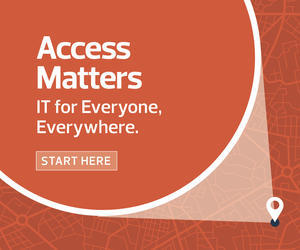1. Prioritize Internet Access for Students, on Campus and Off
A New America survey found that 57 percent of college students said it was a challenge to access reliable, high-speed internet in 2020.
While there are many discounted or free internet packages available for lower-income college students, keep in mind that discounted plans are not always the best option, as they may not offer an internet speed sufficient for streaming lectures or uploading large assignment files.
To serve students who live close by, a growing number of universities and colleges are making parking lots into Wi-Fi hotspots. Washington State University, for example, converted its parking lots into 600 high-speed Wi-Fi hubs.
For students who live farther away, especially in rural areas where network infrastructure is limited, universities can help bridge the gap by providing their own internet service packages. Southern State Community College in Ohio, for example, has a one-to-one program that allows students to borrow Kajeet wireless hotspot devices and laptops for remote learning. The application process to join is quick and simple, which is important when it comes to ensuring those who lack access to internet can complete the application.
MORE ON EDTECH: Here's 6 ways to close the broadband gap between rural and urban students.
2. Be Intentional When Selecting Devices and Software
Without access to campus computer labs, many underserved students are painstakingly typing essays from mobile devices and livestreaming lectures to tiny screens. To address the dire need for laptops, nonprofit universities can potentially partner with organizations like PCs for People, which helps universities purchase low-cost devices in bulk.
Keep in mind that technology solutions should be flexible. “We don’t live in a one-size-fits-all world,” Pappas says. “Some students might benefit from a laptop preloaded with course software to work from home. Others might need an environment conducive to getting work done, like a library or computer lab.”
MORE ON EDTECH: These are the questions to ask before you start a one-to-one program.
Higher education IT teams can play a strategic role by taking the time to understand what lower-income students need before creating solutions to help them. Pappas describes this as “intentionally issued equipment.”
“The most critical factors to consider need to come from listening to your students. No strategy will succeed without direct input from the people you’re trying to assist,” she says. “Issuing iPads over laptops, or vice versa, can either be tremendously impactful or a poor investment. What we’re delivering should align with what will be most useful for the student.”
Many classes also require specific equipment and software. To ensure that devices in one-to-one programs meet the minimum specs required for all courses and majors, universities may want to consult an education strategist from a business analyst service. “That depth of visibility enables us to make decisions in ways that would be impossible for any single institution to replicate,” Pete Koczera, a former senior manager of education strategy and transformation at CDW•G, writes in a blog. “That’s proved to be valuable as colleges have sought to roll out new devices to support remote work and learning.”
3. Offer Accessible Technical and Personal Support
Without the familiar in-classroom structure and in-person support from instructors and advisers, underserved students can feel especially isolated and unmotivated. This leads to less engagement, lower grades and a higher risk of dropping out. A May 2020 survey by The Education Trust reported that only 43 percent of lower-income students could attend virtual office hours during the times the services were offered. For these students, after-hours tech support may mean the difference between passing and failing.














